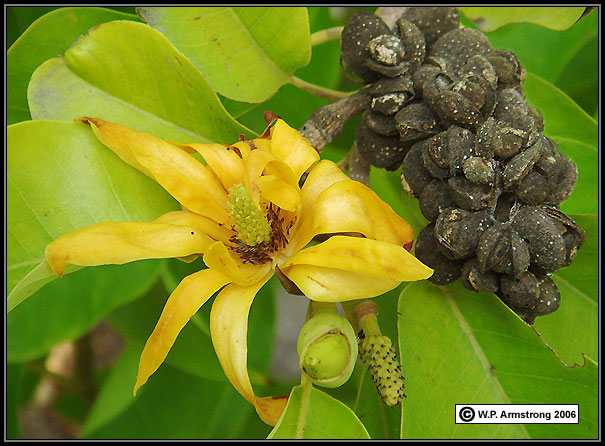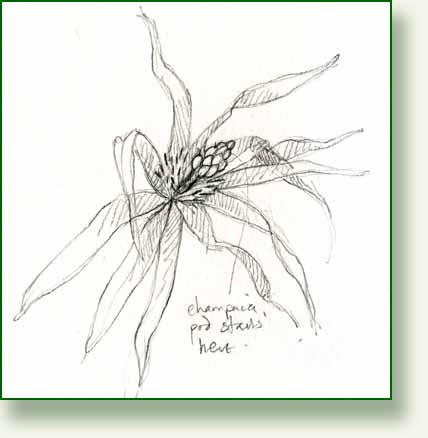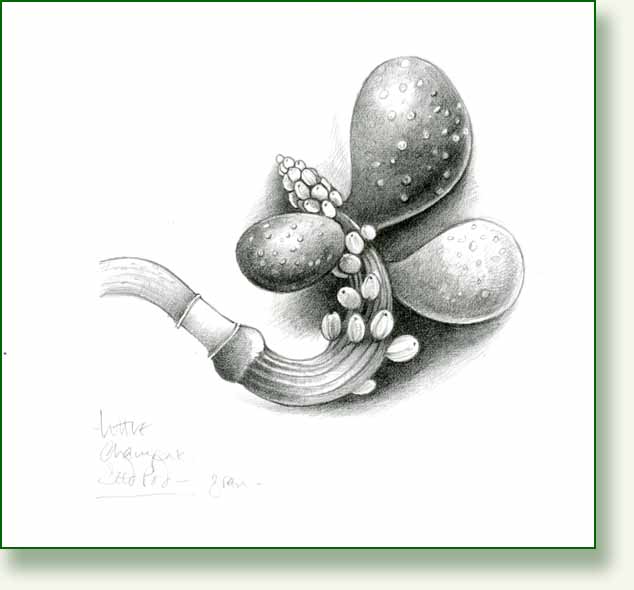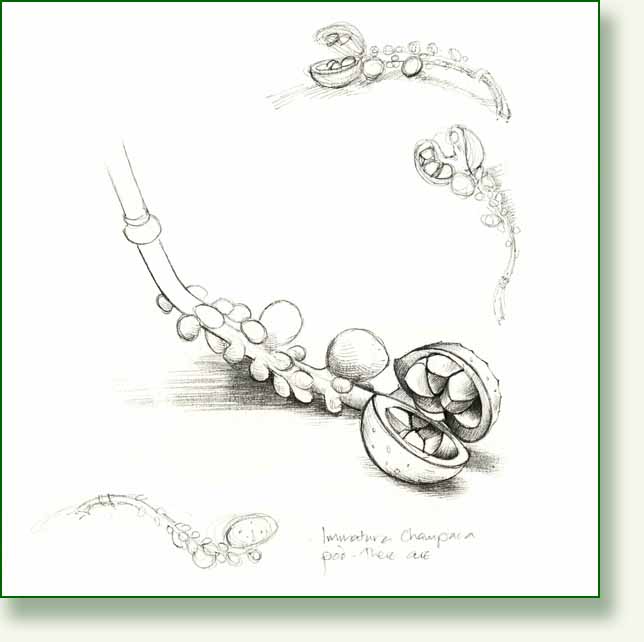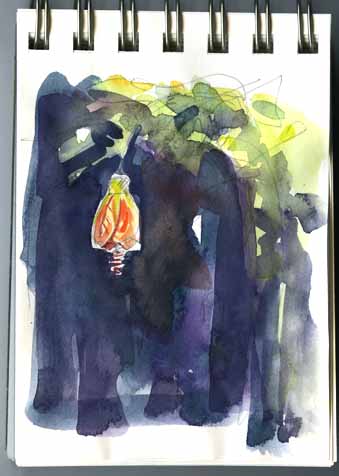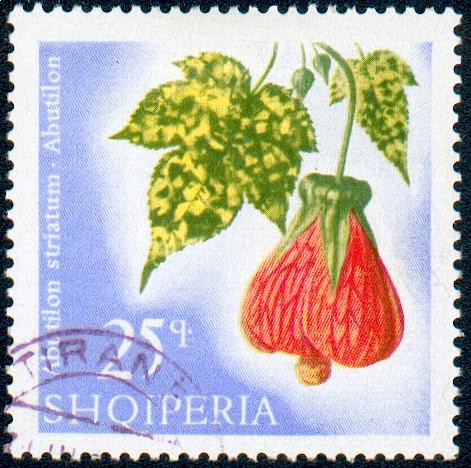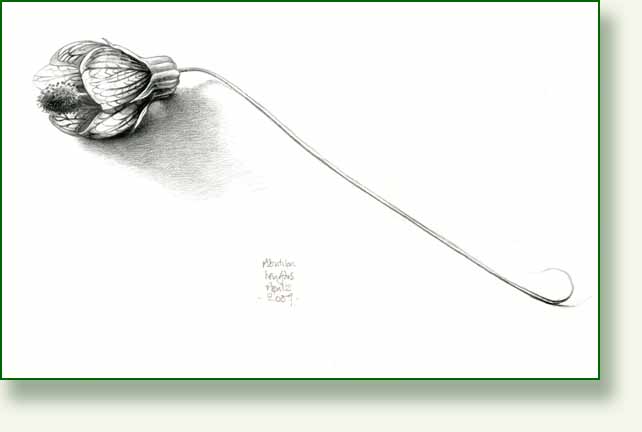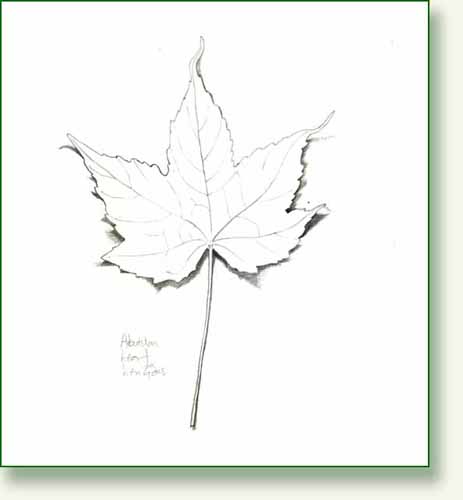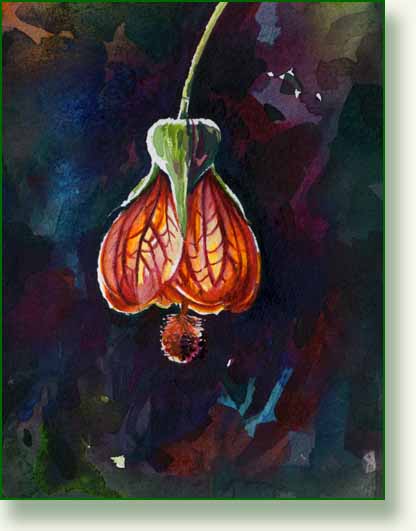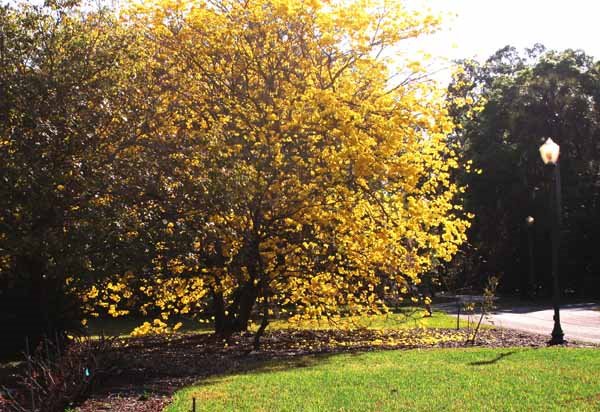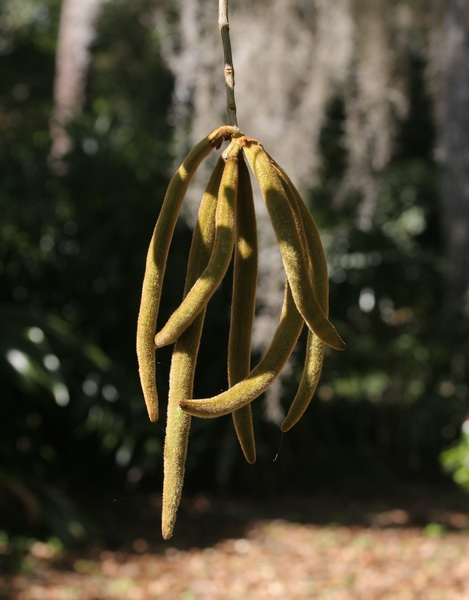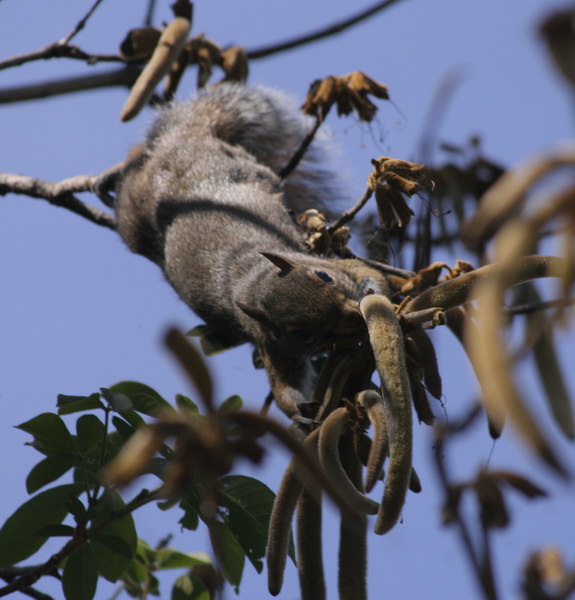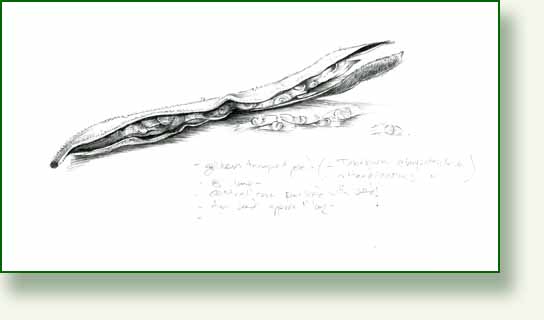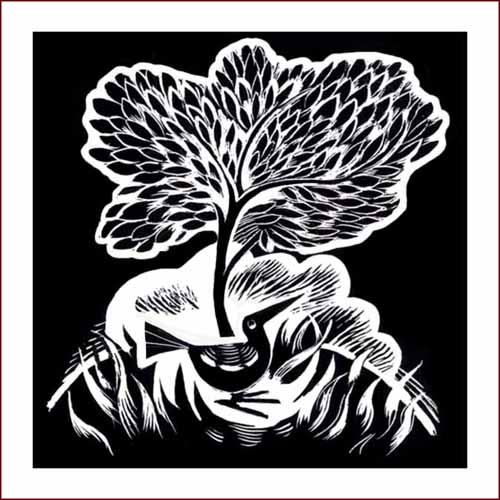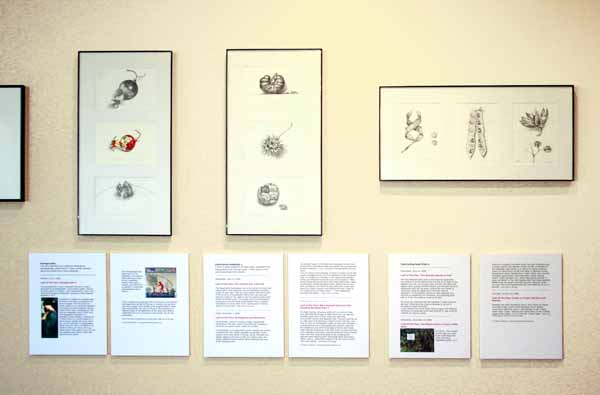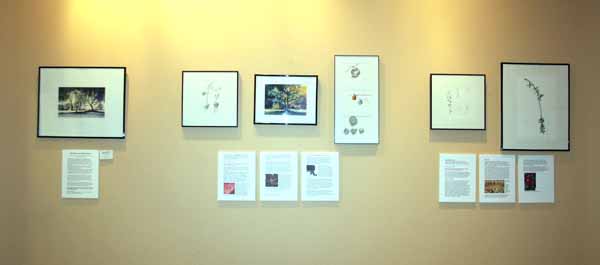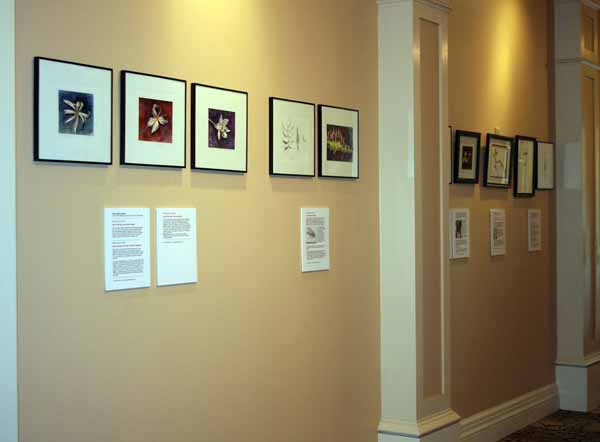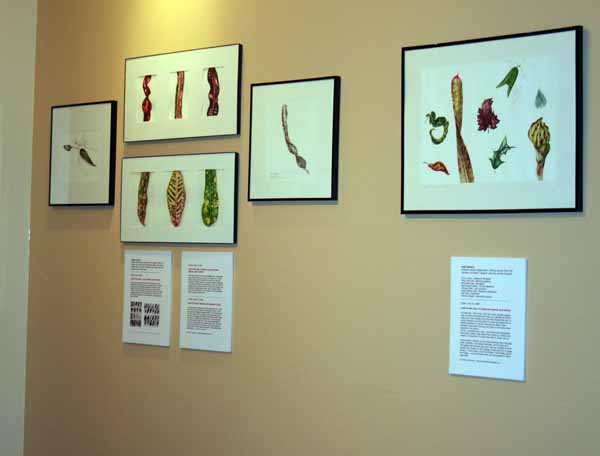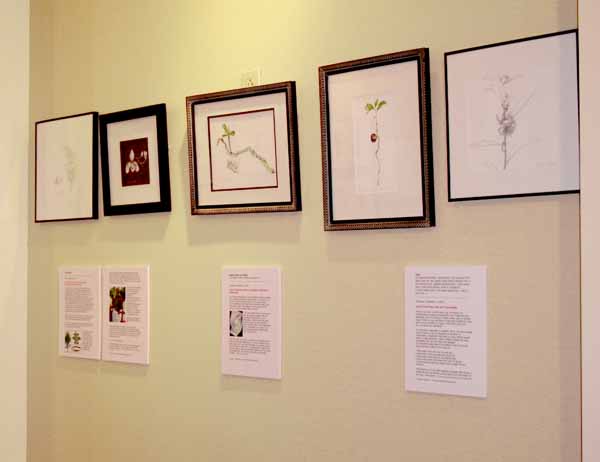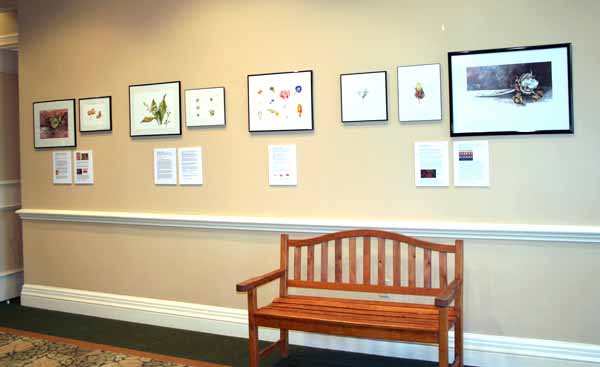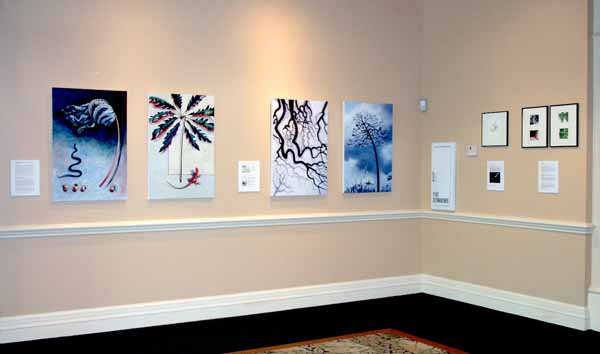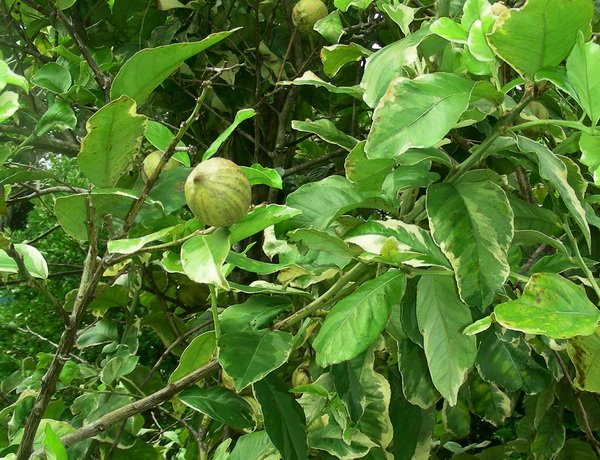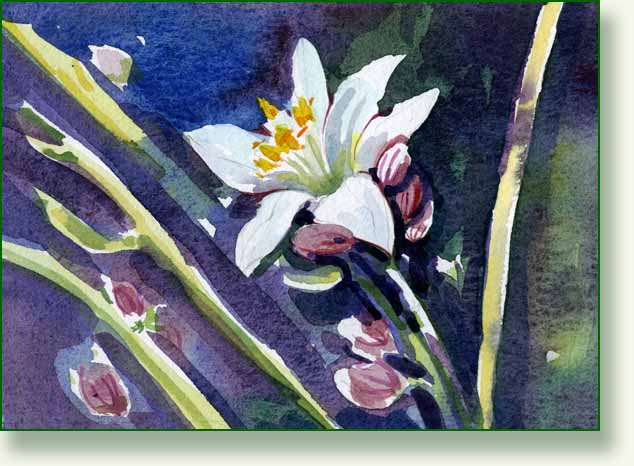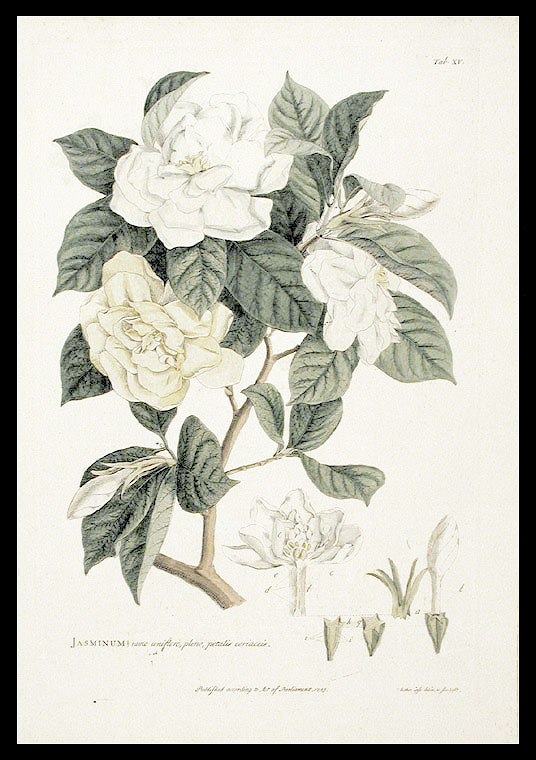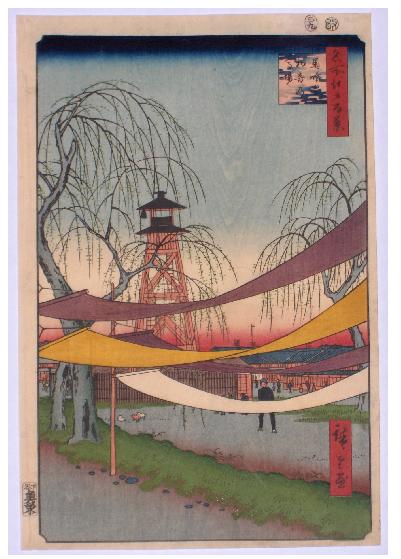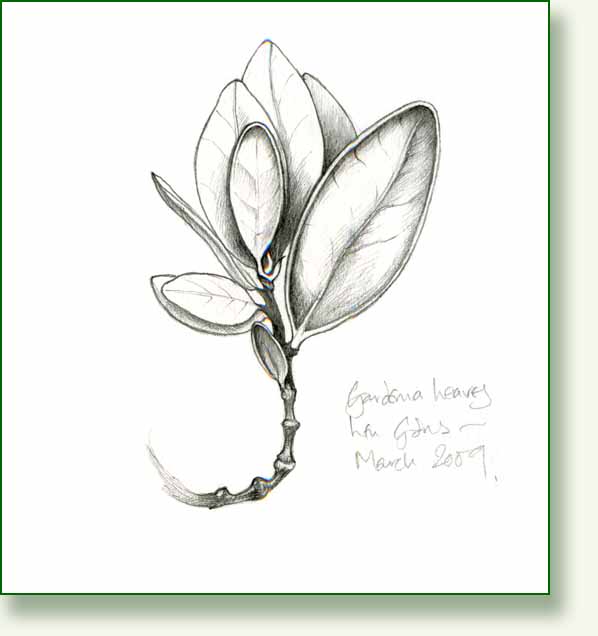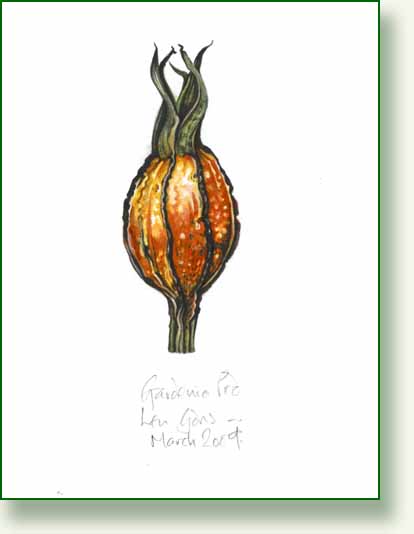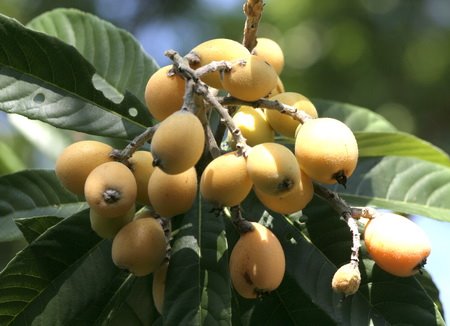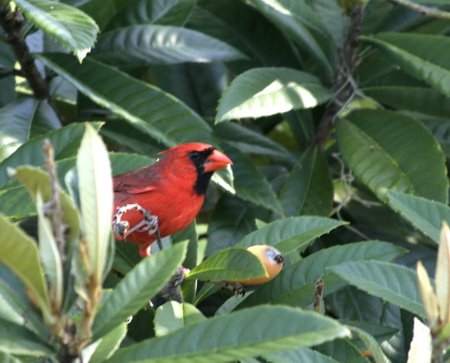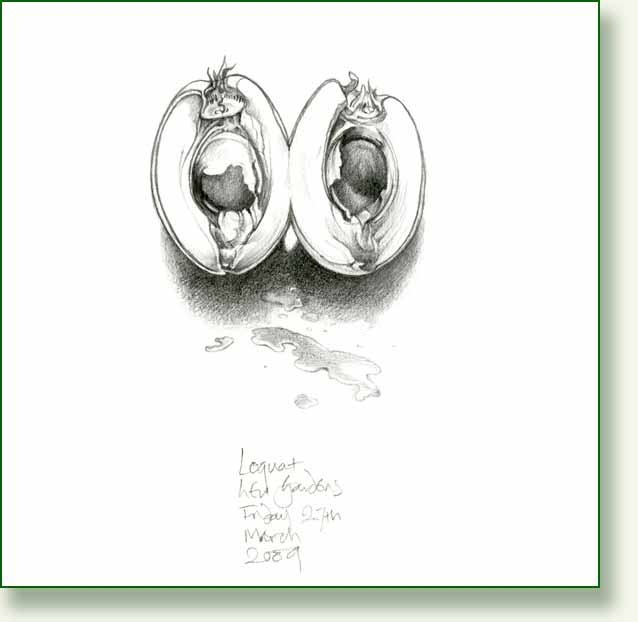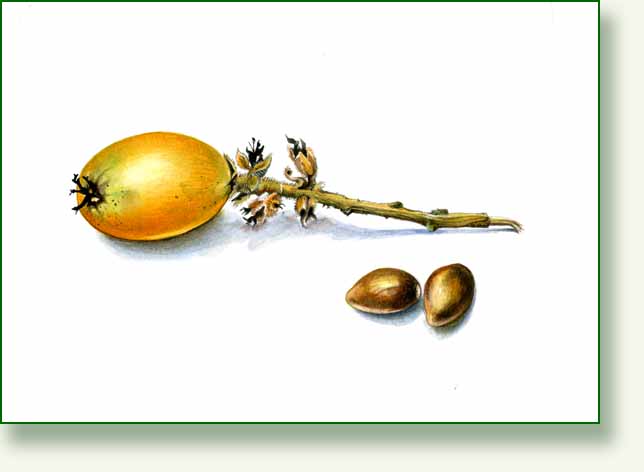On my second visit to Leu this week I was still trying to find inspiration for the next assignment, the botanical study, but keeping me on the straight and narrow when I get to the gardens is just hopeless. I looked at many things, walked for miles and looked again at the soapberry and the tea camellia and am considering the crown flower again, but there are no flowers on the tea at the moment and the soapberry flowers are the tiniest things you can imagine.
So I came to no conclusion but did find these odd little immature Champaca pods. Long ago Pedro gave me an old gnarled spent seed case from this beautiful tree, since when I have been patiently waiting for a new one… for over a year. I think I now know why I can’t find a mature one ..it’s squirrels.. It has to be the squirrels again, they eat all the pods of the other magnolias too. I can never find one with all those lovely red seeds.
I wrote about the glorious scented Champacas last year here and the beautiful big Michaelia alba near the avenue of Camphor trees has just started blooming. The scent is sheer heaven ! I brought one of the little flowers back with me and its perfume has filled the room.
The pods are actually from the Michaelia champaca, the original “Joy Perfume” tree and develop from the cone shaped central receptacle of the flower. This photograph is from the excellent Wayne’s Word site here and shows the flower and the mature seed pod.
If only I could find one. I think I may ask Pedro to put a bag over one for me while it matures. I am sure I read this advice somewhere, given to someone also trying to find an intact un-squirreled magnolia pod.
These are curious things, green with white spots at the moment. The mature ones will blacken and then split. I cut one large pod open and inside were 6 seeds snugly wedged up against each other, completely filling the cavity, again, beautifully designed. As I took them apart, there were the fine white strings that attach the seeds to the case, just like the magnolia.
___________________________________________

